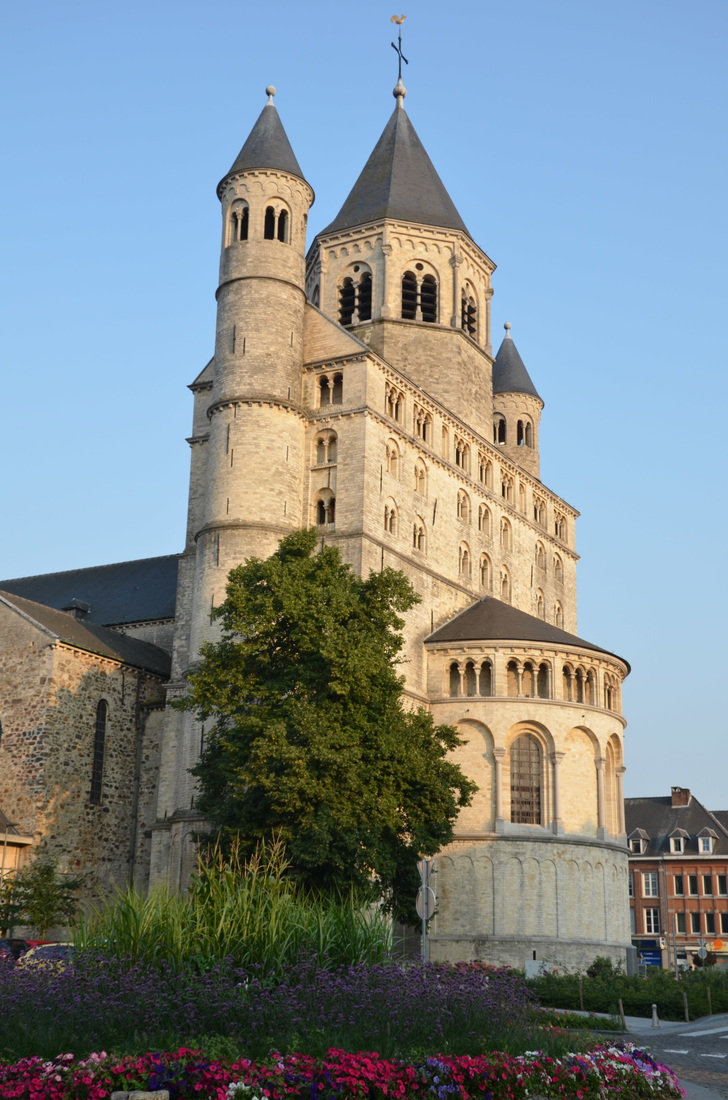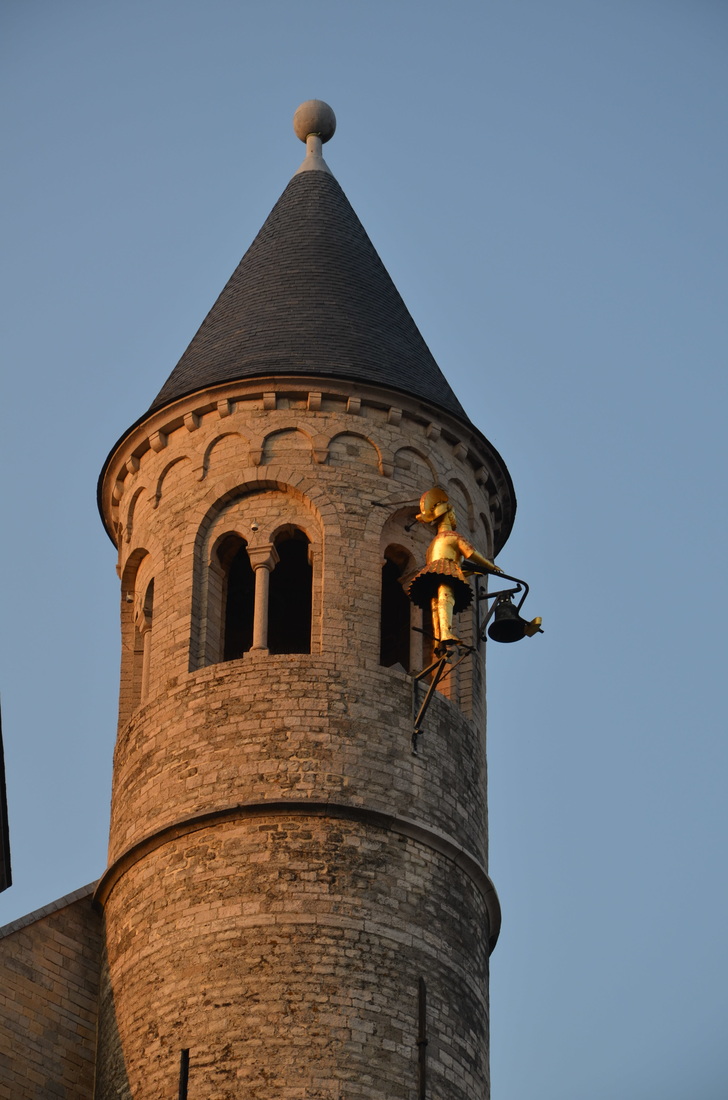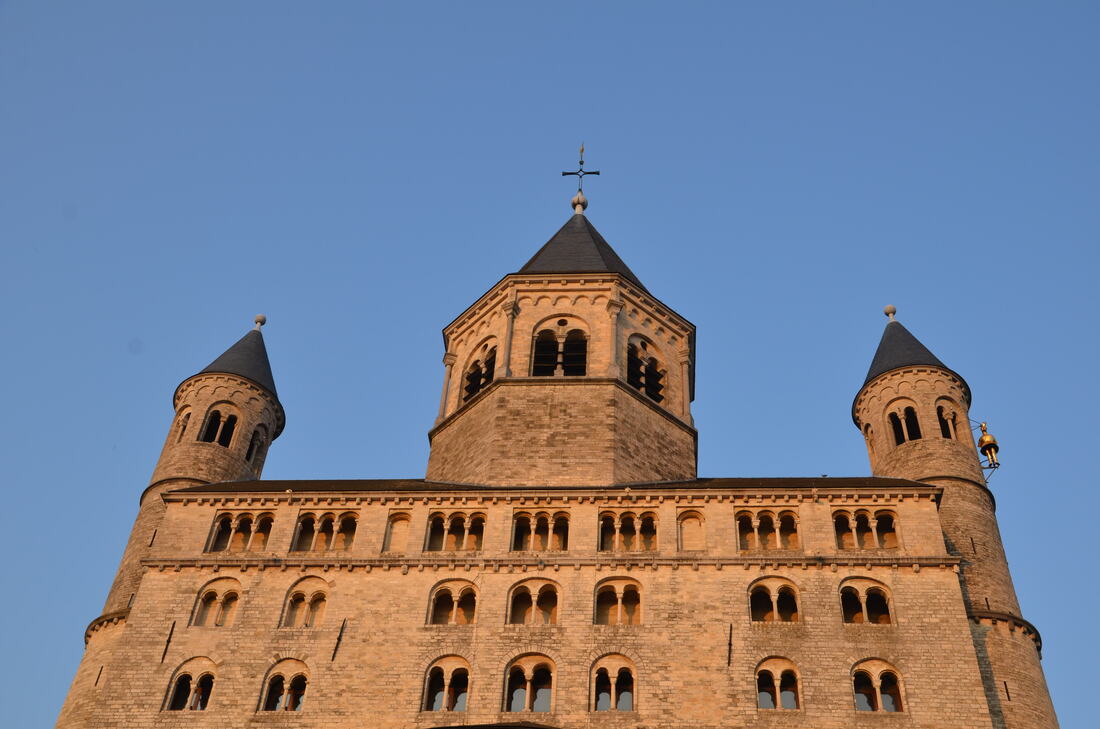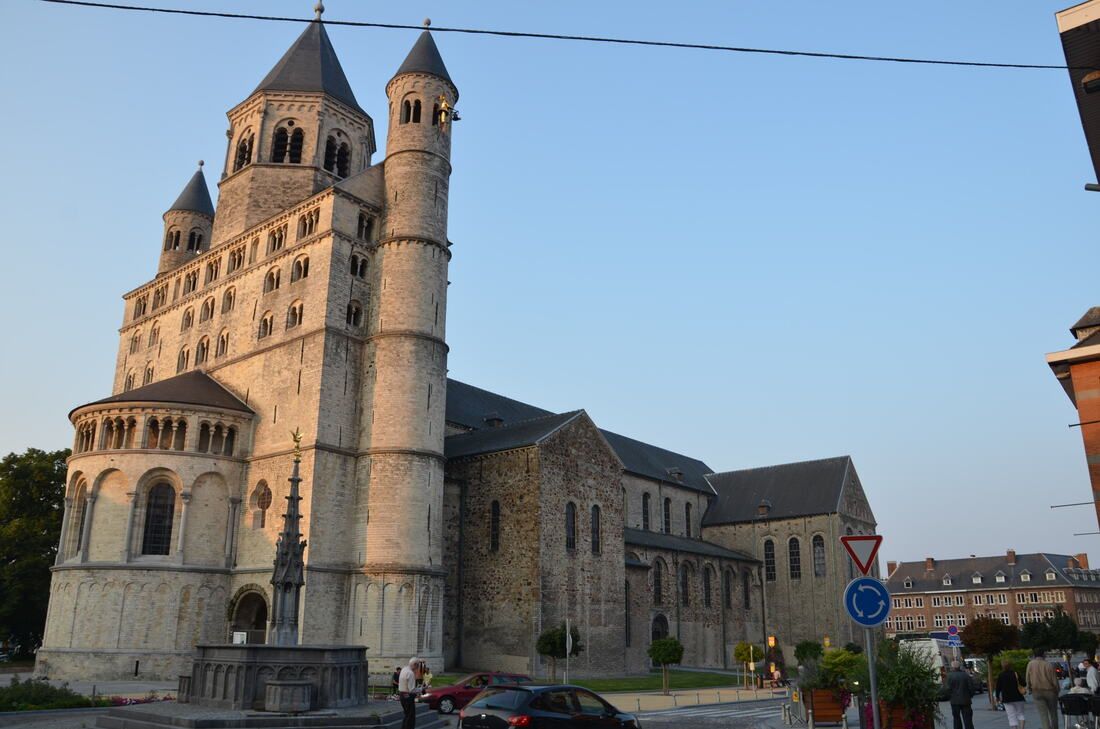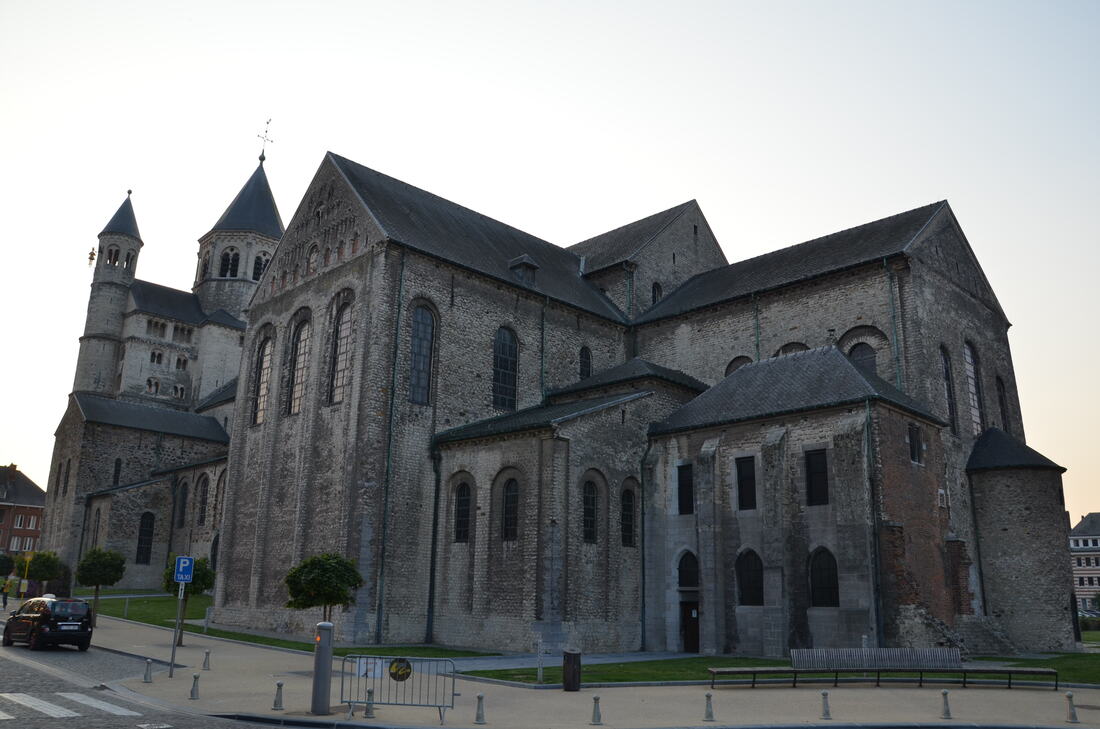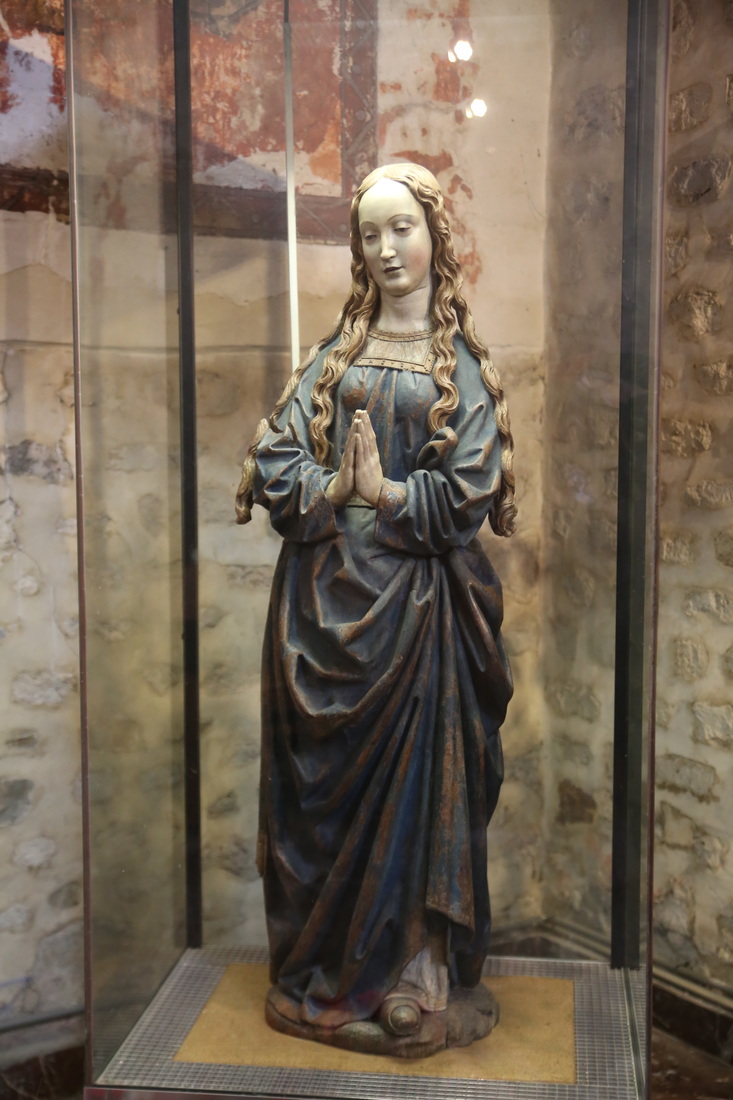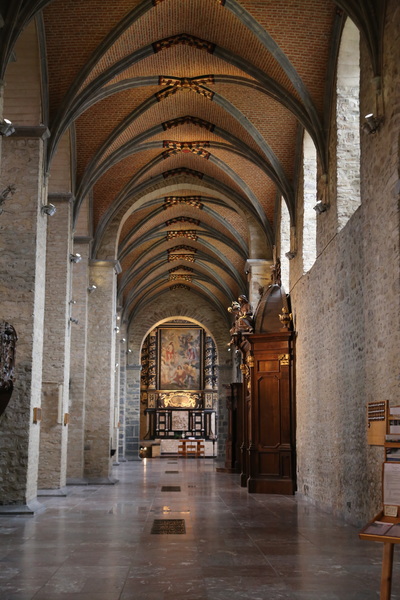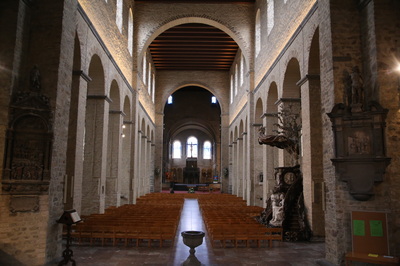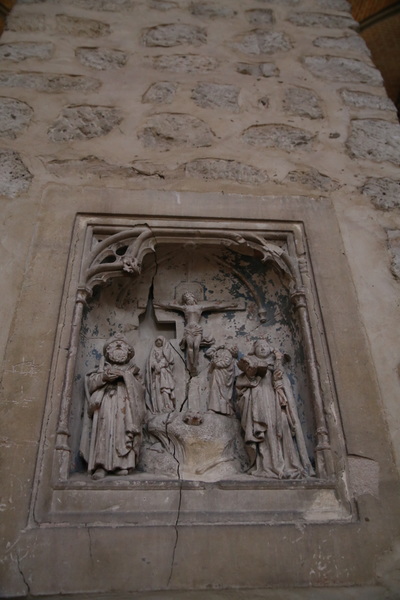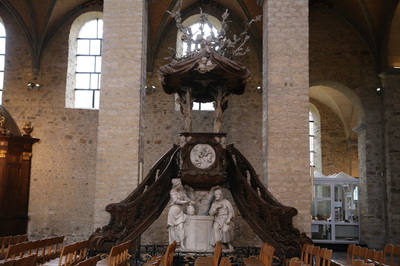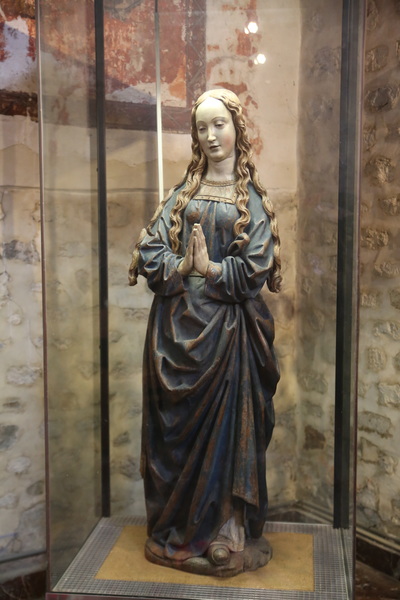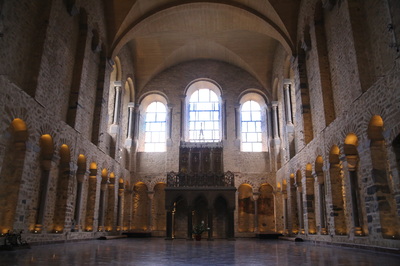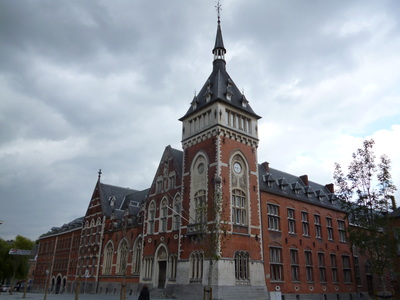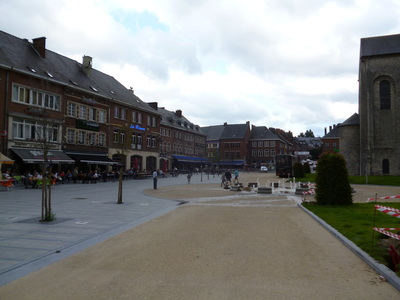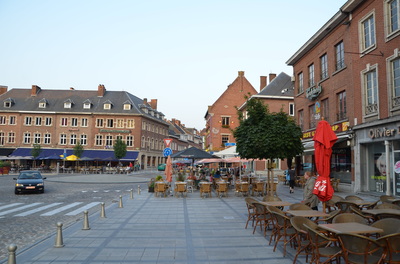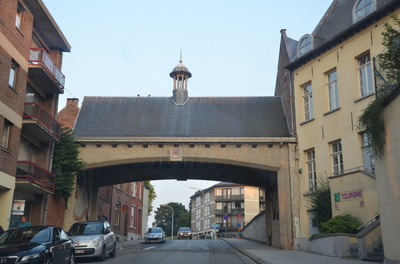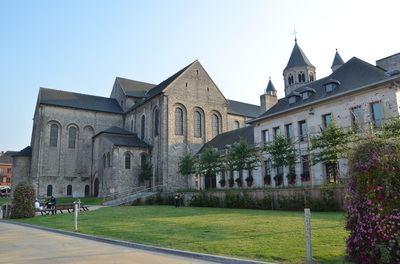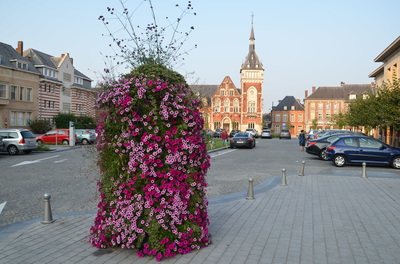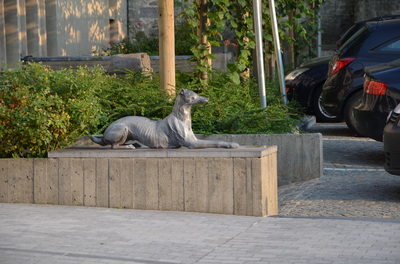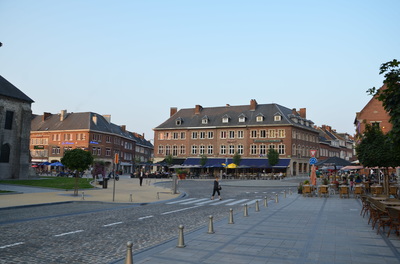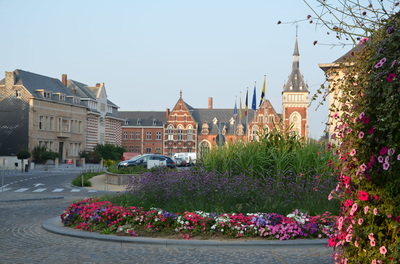Nivelles |
vertical divider
miasto położone w Brabancji Walońskiej, francuskojęzycznej części Belgii, 30 km na południe od Brukseli i 35 km na północny-wschód od Mons. W średniowieczu Nivelles było warownym miasteczkiem otoczonym potężnym wałem o szerokości około 2,5 m, przed którym znajdowała się głęboka, częściowo zalana fosa. Wejście do miasta było możliwe tylko przez jedną z siedmiu bram warownych, które były strzeżone przez rycerzy i zamknięte w nocy.
|
W skład fortyfikacji miejskich wchodziło dziewięć wież, z których każda miała wąskie szczeliny, pozwalające strażnikom kontrolować podejście do miasta. W XIX wieku wały obronne rozebrano, kiedy stały się przeszkodą dla ekspansji miasta. Dzisiaj istnieją już tylko nieliczne ślady obwarowania miasta, m.in. Wieża Simone, zwana także Wieżą Diabła.
Współcześnie miasto zamieszkuje około 24 tysiące mieszkańców. Nivelles jest jednym z kilku interesujących miasteczek w okolicy. Warto również pojechać do Waterloo, miejsca spektakularnej klęski Napoleona Bonaparte, oraz Villers-la-Ville, z monumentalnymi ruinami opactwa cystersów. Tym co przyciąga rzesze turystów do Nivelles jest bezwątpienia piękna kolegiata św. Gertrudy.
Współcześnie miasto zamieszkuje około 24 tysiące mieszkańców. Nivelles jest jednym z kilku interesujących miasteczek w okolicy. Warto również pojechać do Waterloo, miejsca spektakularnej klęski Napoleona Bonaparte, oraz Villers-la-Ville, z monumentalnymi ruinami opactwa cystersów. Tym co przyciąga rzesze turystów do Nivelles jest bezwątpienia piękna kolegiata św. Gertrudy.
After her death, in 659, Gertrude was proclaimed a saint. Over the centuries, her cult grew and the number of pilgrims wishing to visit Nivelles, the place where she lived, increased. Therefore, there was a need to build a larger church that could accommodate all the faithful. A temple was built in the early Ottonian-Romanesque style. In 1046, the Bishop of Liege, Vase, consecrated the church in the presence of Emperor Henry III. Saint Gertrude was chosen as its patron.
This huge collegiate church has two transverse naves and two choirs (presbyteries), which was specific to the churches built at that time. The eastern choir rises above the crypt. The mighty front of the building was built in the 12th century. It has an apse, two chapels on the second floor, a staircase with 132 stairs, a high room called the Imperial Room, an octagonal tower (rebuilt in the Romanesque style in place of the Gothic tower destroyed in 1940), with a belfry with 49 bells.
This huge collegiate church has two transverse naves and two choirs (presbyteries), which was specific to the churches built at that time. The eastern choir rises above the crypt. The mighty front of the building was built in the 12th century. It has an apse, two chapels on the second floor, a staircase with 132 stairs, a high room called the Imperial Room, an octagonal tower (rebuilt in the Romanesque style in place of the Gothic tower destroyed in 1940), with a belfry with 49 bells.
The collegiate church also has two corner towers. On the southern tower there is a figure of the bell-ringer Jan de Nivelles (Jacquemart), 2,08 m, hammering an hour from 1400 a year. After being damaged during World War II, the figure was renewed in 1984 a year. The southern peak of the eastern transept called the peak of St. Peter was built in the 12th century. The central nave is 102 meters long, making it one of the longest in the world. Under the eastern choir is one of the largest crypts in the region (22 mx 10,4 m). It was built around 1100 a year. It has three naves of equal height, a vault and an apse at the end of the nave.
The archaeological site (VII-X century) discovered during the renovation of the collegiate church ruined as a result of hostilities is unique in Belgium. It shows the foundations and remains of the previous five churches. From the first Merovingian sanctuary (650), with the burial place of St. Gertrude and her parents until the last Basilica of the Carolingians from the 10th century. Excavations were carried out from 1941 to 1952 a year.
The archaeological site (VII-X century) discovered during the renovation of the collegiate church ruined as a result of hostilities is unique in Belgium. It shows the foundations and remains of the previous five churches. From the first Merovingian sanctuary (650), with the burial place of St. Gertrude and her parents until the last Basilica of the Carolingians from the 10th century. Excavations were carried out from 1941 to 1952 a year.
Wewnątrz kolegiaty można podziwiać pięć rzeźb XVIII-wiecznego artysty Laurenta Delvaux, w tym bogatą dębowo-marmurową ambonę, będącą przykładem mistrzostwa rzeźbiarza, który zestawiając kontrastujące ze sobą biały marmur i lakierowane drewno harmonijnie połączył trzy różne style: barok, rokoko i klasycyzm. Także wewnętrzny ganek chroniący wejście od strony południowej jest dziełem Delvaux. Wykonano go z lakierowanego drewna dębowego, ozdobionego złoceniami i zwieńczonego posągami przedstawiającymi cnoty męstwa oraz roztropności.
Laurent Devlaux był jednym z najwybitniejszych rzeźbiarzy tamtych czasów. Jego mistrzostwo w łączeniu różnych stylów spowodowało, że stał się nadwornym rzeźbiarzem Karola Lotaryńskiego.
Następne dzieła Devlaux znajdują się w skrzydle zachodnim w miejscu, gdzie w XI wieku rozpoczęła się budowa kościoła. Możemy tutaj podziwiać dwie rzeźby tego artysty. Pierwsza przedstawia postać św. Gertrudy, patronki kolegiaty. Jest ona tutaj ukazana w triumfalny sposób, jakby w przeciwieństwie do jej prawdziwej natury, która była spokojna i pokorna. Drugi posąg uosabia ojca św. Gertrudy, Pepina Starszego. Piękny alabastrowo-marmurowy ołtarz pochodzący z 1623 roku jest dziełem rzeźbiarza Jana Thonon z Dinant. Składa się on z dziesięciu alabastrowych płaskorzeźb, w tym: Pokłon Pasterzy i legendarne epizody z życia św. Gertrudy. Pierwotnie częścią tego ołtarza były również dwa posągi: św. Gertrudy oraz św. Piotra, które współcześnie wystawione są w Pokoju Cesarskim. Ołtarz znajduje się w barokowym otoczeniu we wschodniej części kościoła, w miejscu, w którym niegdyś stały organy.
Laurent Devlaux był jednym z najwybitniejszych rzeźbiarzy tamtych czasów. Jego mistrzostwo w łączeniu różnych stylów spowodowało, że stał się nadwornym rzeźbiarzem Karola Lotaryńskiego.
Następne dzieła Devlaux znajdują się w skrzydle zachodnim w miejscu, gdzie w XI wieku rozpoczęła się budowa kościoła. Możemy tutaj podziwiać dwie rzeźby tego artysty. Pierwsza przedstawia postać św. Gertrudy, patronki kolegiaty. Jest ona tutaj ukazana w triumfalny sposób, jakby w przeciwieństwie do jej prawdziwej natury, która była spokojna i pokorna. Drugi posąg uosabia ojca św. Gertrudy, Pepina Starszego. Piękny alabastrowo-marmurowy ołtarz pochodzący z 1623 roku jest dziełem rzeźbiarza Jana Thonon z Dinant. Składa się on z dziesięciu alabastrowych płaskorzeźb, w tym: Pokłon Pasterzy i legendarne epizody z życia św. Gertrudy. Pierwotnie częścią tego ołtarza były również dwa posągi: św. Gertrudy oraz św. Piotra, które współcześnie wystawione są w Pokoju Cesarskim. Ołtarz znajduje się w barokowym otoczeniu we wschodniej części kościoła, w miejscu, w którym niegdyś stały organy.
|
Posąg Błogosławionej Dziewicy
Ta wyjątkowa rzeźba, przedstawiająca postać młodej Marii Panny, jest dziełem rzeźbiarza aktywnego w XV wieku, będącego członkiem świty Jana Bormana. Możemy tutaj zobaczyć osobę Maryi Panny, przedstawioną z odkrytą głową i złożonymi rękoma. W jednej z kaplic, we wschodniej części kolegiaty, umieszczono piękny relikwiarz wykonany ze stali, ozdobiony srebrem i brązem. Składa się on z 36 paneli z litego srebra. Są w nim złożone relikwie św. Gertrudy. Ten współczesny relikwiarz wykonał w 1982 roku artysta Felix Roulin. Oryginalny gotycki relikwiarz spłonął w pożarze z dnia 14 maja 1940 roku. Obok rzeźb św. Gertrudy i jej ojca Pepina Starszego, w zachodniej części kościoła znajduje się powóz używany, w trakcie corocznej procesji, do wiezienia relikwiarza ze szczątkami św. Gertrudy.
Tour st. Gertrude, bo tak nazywa się ta procesja, odbywa się już od XIII wieku w ostatnią niedzielę września lub pierwszą niedzielę października, dla uczczenia pamięci św. Gertrudy. Relics with the remains of the saint are transported in a reliquary placed on a 15th century cart. The procession follows in the footsteps of St. Gertrude, i.e. the outskirts of the city where the poorest lived at that time.
|
Trasa procesji liczy 14 kilometrów. Tam, gdzie nie ma wytyczonej żadnej drogi, procesja przechodzi przez pola. Po południu, gdy relikwiarz jest z powrotem wprowadzany do kościoła, na głównym placu przed świątynią odbywa się festyn z jarmarkiem i przebierańcami na szczudłach.
The part is only visited with a guide
Obok kolegiaty znajduje się klasztor kanoników, wybudowany w XIII wieku. Stanowi on wraz z kolegiatą jedyne pozostałości opactwa założonego w VII wieku. Miejsce to można zwiedzać tylko z przewodnikiem. Na podwórzu klasztoru wystawiono starożytne nagrobki i dzwony z dzwonnicy zniszczonej w 1940 roku.
Tylko z przewodnikiem zwiedzimy również archeologiczne wykopaliska znajdujące się w podziemiach kolegiaty, kryptę datowaną na XI wiek, oraz Pokój Cesarski położony 20 metrów nad dziedzińcem kolegiaty. Zajmuje on całą wewnętrzną przestrzeń (25 m x 8 m) skrzydła zachodniego (rozbudowana, umieszczona poprzecznie do nawy, zachodnia część bazyliki, charakterystyczna dla architektury przedromańskiej) na tym poziomie.
W pokoju tym znajdują się m.in. kopia XIII-wiecznego relikwiarza do przenoszenia relikwii św. Gertrudy (oryginał spłonął w 1940 roku) oraz panele z XV wieku zdobiące w przeszłości wóz św. Gertrudy.
Tylko z przewodnikiem zwiedzimy również archeologiczne wykopaliska znajdujące się w podziemiach kolegiaty, kryptę datowaną na XI wiek, oraz Pokój Cesarski położony 20 metrów nad dziedzińcem kolegiaty. Zajmuje on całą wewnętrzną przestrzeń (25 m x 8 m) skrzydła zachodniego (rozbudowana, umieszczona poprzecznie do nawy, zachodnia część bazyliki, charakterystyczna dla architektury przedromańskiej) na tym poziomie.
W pokoju tym znajdują się m.in. kopia XIII-wiecznego relikwiarza do przenoszenia relikwii św. Gertrudy (oryginał spłonął w 1940 roku) oraz panele z XV wieku zdobiące w przeszłości wóz św. Gertrudy.
The market in Nivelles
Kolegiata św. Gertrudy otoczona jest przez duży rynek. Znajdziemy na nim wiele ciekawych obiektów. Obok wieży Jana de Nivelles znajduje się fontanna du Perron (fontanna Stoop) zbudowana, w 1523 roku, przez Adrienne de Moerbeke. Początkowo fontanna zwieńczona była posągiem arcyksięcia Alberta (1618 r.), jednak potem zastąpiono go pozłacaną rzeźbą Michała Archanioła, patrona Nivelles. Idąc wzdłuż kolegiaty warto zwrócić uwagę na szczyt transeptu, zwanego Pigeon St. Pierre, z XIII wieku. Na Place Lambert Schiffelers znajduje się piękny budynek Palais de Justice (sąd) zbudowany w stylu neogotyckim.
Na rynku można odpocząć w jednej z wielu restauracji lub kontynuować zwiedzanie. Idąc wzdłuż Rue de Charleroi, po lewej stronie, możemy zobaczyć serię małych XVII-wiecznych domów. Przy Rue St. Georges oraz Rue des Conceptionnistes następne zabytkowe kamienice. Te z numerami 6, 8 i 10 pochodzą z XVII wieku, numer 15 to wiek XIV/XV, a numer 18 wybudowano, w stylu Ludwika XV, w XVII wieku.
Przy ulicy Rue des Bruxelles znajduje się Muzeum Archeologiczne, Sztuki i Historii. Jest ono usytuowane w XVIII-wiecznym budynku, w zacisznej uliczce. Znajdziemy tu m.in. bogatą XVIII-wieczną kolekcję malarstwa Fryderyka Dumesnil, zabytkowe meble, bardzo rzadkie terakoty wykonane przez Lourenta Delvaux jako modele do jego monumentalnych prac. Ponadto wystawiane są tu gobeliny, obrazy, instrumenty muzyczne, monety, dokumenty i zabytkowe obiekty odkryte w pobliżu Nivelles.
Na rynku można odpocząć w jednej z wielu restauracji lub kontynuować zwiedzanie. Idąc wzdłuż Rue de Charleroi, po lewej stronie, możemy zobaczyć serię małych XVII-wiecznych domów. Przy Rue St. Georges oraz Rue des Conceptionnistes następne zabytkowe kamienice. Te z numerami 6, 8 i 10 pochodzą z XVII wieku, numer 15 to wiek XIV/XV, a numer 18 wybudowano, w stylu Ludwika XV, w XVII wieku.
Przy ulicy Rue des Bruxelles znajduje się Muzeum Archeologiczne, Sztuki i Historii. Jest ono usytuowane w XVIII-wiecznym budynku, w zacisznej uliczce. Znajdziemy tu m.in. bogatą XVIII-wieczną kolekcję malarstwa Fryderyka Dumesnil, zabytkowe meble, bardzo rzadkie terakoty wykonane przez Lourenta Delvaux jako modele do jego monumentalnych prac. Ponadto wystawiane są tu gobeliny, obrazy, instrumenty muzyczne, monety, dokumenty i zabytkowe obiekty odkryte w pobliżu Nivelles.
